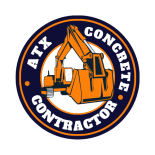Concrete resurfacing isn’t just a makeover; it’s a meticulous process that restores and enhances surfaces, breathing new life into worn-out concrete. Let’s explore each step in detail:
Surface Preparation: Surface preparation is akin to laying a strong foundation for a sturdy building. Beyond just cleaning, it involves meticulous removal of contaminants, ensuring an immaculate surface. This phase is instrumental in identifying imperfections such as cracks or spalling, allowing for focused repair work. The extent of this preparation directly impacts the longevity and resilience of the final resurfaced area.
Repair and Restoration: Repairing the surface imperfections is more than just aesthetic enhancement; it’s about fortifying the structural integrity. Addressing cracks and damaged areas isn’t merely a cosmetic fix; it’s a proactive step to prevent further deterioration. Advanced compounds and leveling techniques help smoothen uneven surfaces and eliminate potential hazards, ensuring a stable base for the overlay material.
Primer Application: Applying a primer serves as a crucial step in ensuring the overlay adheres firmly to the existing surface. Beyond enhancing adhesion, it acts as a protective barrier, shielding against potential issues such as delamination. This phase is akin to the foundation priming for a painting; it ensures the overlay material bonds securely, enhancing the surface’s durability and longevity.
Overlay Application: The application of the overlay material marks the transformation of the surface. Utilizing high-quality overlay materials like polymer-modified resins or microtoppings not only covers the surface but also enhances its structural robustness. The thickness and application technique influence not just the appearance but also the resilience of the resurfaced area.
Texture and Design Implementation: Creating textures and designs during resurfacing is akin to an artist’s brushstroke. Techniques like stamping, staining, or scoring provide an array of options to mimic natural materials or create custom patterns. These artistic elements add character and personality to the surface, offering a unique visual appeal.
Sealing and Protective Coating: Sealants and protective coatings aren’t just for aesthetics; they act as the surface’s guardians. These coatings offer a defensive shield against stains, moisture, and everyday wear and tear. Choosing high-quality sealants ensures prolonged protection, extending the surface’s life and minimizing maintenance requirements.
Curing and Maintenance Guidance: Post-resurfacing, allowing the overlay to cure properly is akin to nurturing a delicate seedling. Professional guidance on proper maintenance, cleaning protocols, and regular care ensures the surface’s sustained vibrancy and structural integrity. This proactive approach ensures the surface maintains its aesthetic allure and functional durability over time.
Tips for Successful Concrete Resurfacing
Before beginning any work, conduct a comprehensive inspection of the concrete surface. Identify cracks, spalling, or areas needing repair. A thorough assessment ensures all necessary repairs are addressed before resurfacing.
Surface preparation is key to a successful project. Ensure the surface is clean, free from debris, and properly etched or profiled to allow for optimal adhesion of the overlay material. Any repairs or leveling should be done meticulously.
Choose the overlay material wisely based on the surface condition, desired finish, and durability requirements. Polymer-modified overlays, for example, offer superior strength and versatility, allowing for various textures and designs.
While DIY kits are available, professional application ensures a high-quality finish. Experienced contractors possess the expertise and equipment necessary for a seamless and durable application, ensuring long-term satisfaction.
Consider different textures, patterns, and finishes to personalize the surface. Stamping, staining, or decorative treatments offer a wide array of design options to create a unique and visually appealing finish.
Apply a high-quality sealer or protective coating after resurfacing. This safeguards the surface from stains, moisture, and abrasions, prolonging its lifespan. Follow recommended maintenance practices to preserve the finish.
After application, allow adequate time for curing before subjecting the surface to heavy use or foot traffic. Follow manufacturer guidelines for curing times to ensure the overlay material properly sets.
Regularly maintain the resurfaced surface by following proper cleaning routines and performing necessary upkeep. Preventative maintenance helps retain the surface’s aesthetics and prolongs its lifespan.
If unsure about any step in the process or the materials to use, consult with experienced professionals. They can offer valuable advice, guidance, and recommendations tailored to your specific project needs.
Conclusion
In the realm of surface restoration, concrete resurfacing stands as a transformative art. This meticulous process breathes new life into worn-out concrete, offering not just aesthetic enhancement but also durability and longevity. Through thorough surface preparation, repair, and expert application of overlay materials, concrete resurfacing revitalizes surfaces, addressing flaws and transforming them into renewed canvases. The creative freedom to choose textures, patterns, and finishes adds a personalized touch, elevating the aesthetics to mimic natural materials while ensuring durability through protective sealing.
